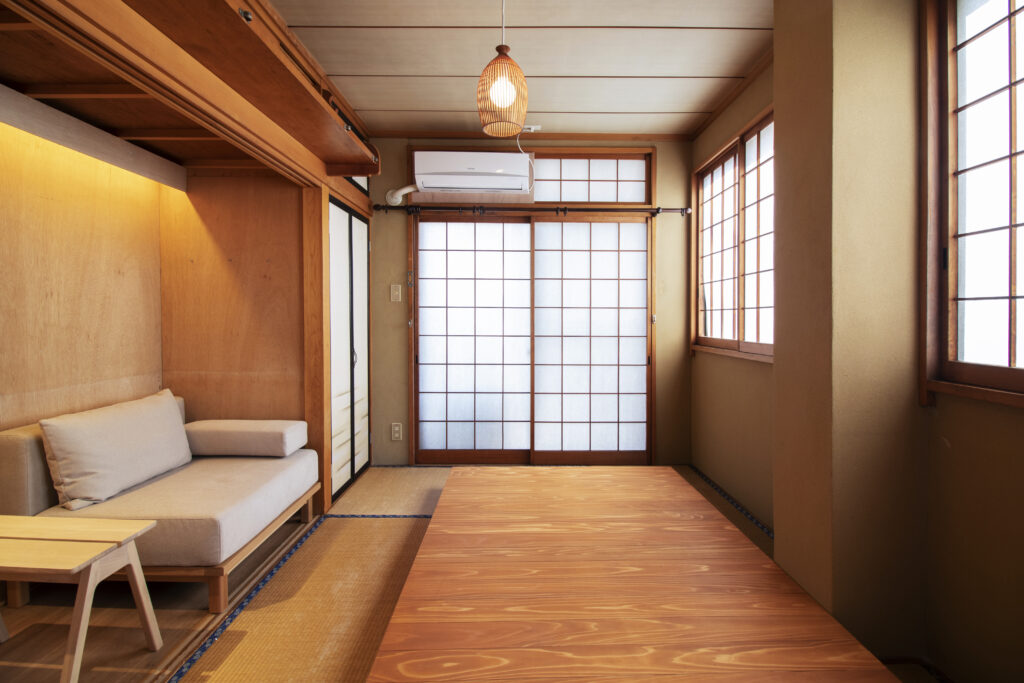In our previous article, we introduced the origin story of Makigumi—a group born out of post-disaster Ishinomaki. While new public housing developments were built in the wake of the 2011 Great East Japan Earthquake, another issue emerged behind the scenes: a growing number of vacant houses, or “akiya”, caused by long-term depopulation.
Instead of seeing these vacant houses as signs of decline, Makigumi began to wonder: could the collaboration between creative people and vacant houses turn Ishinomaki into a unique and inspiring city? One of the key insights that emerged from this process was the importance of flexibility. To create homes that are both personally fulfilling and socially sustainable, Makigumi saw that flexibility was the key.
But how can we design such flexible ways of living?
In this article, we take a closer look at Roopt, Makigumi’s core service for creating housing that is not only functional, but adaptable to the diverse lives of its residents.
How Makigumi Reuses Japan’s Vacant Houses (Akiya) Through Roopt
Makigumi’s answer to the growing number of vacant houses is a housing service called Roopt.
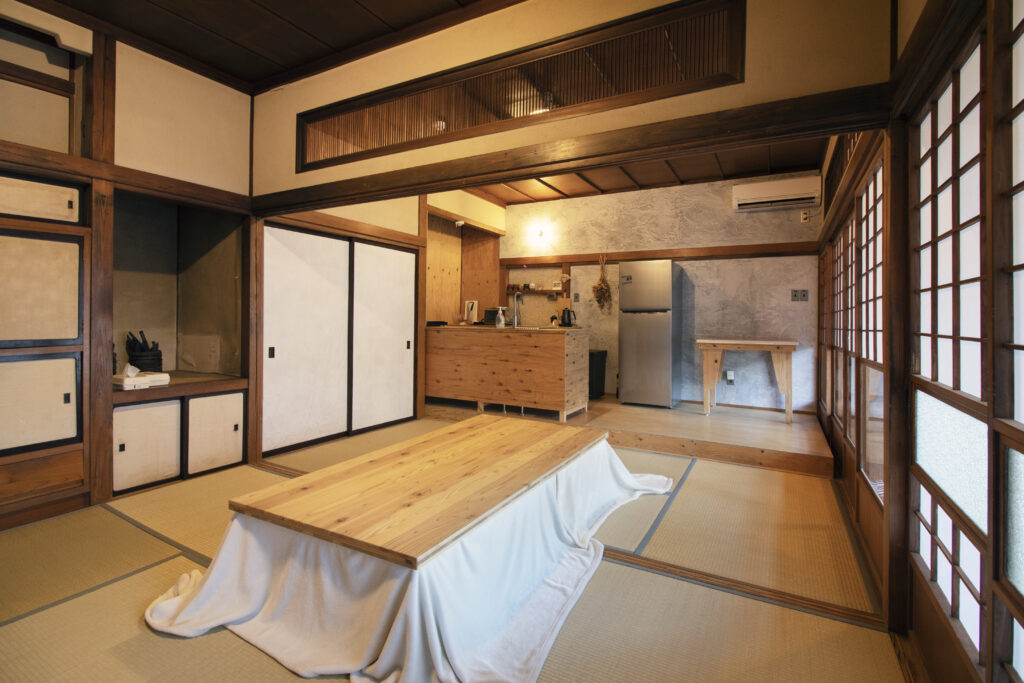
Under this project, Makigumi either purchases or leases unused homes from local owners, renovates them, and operates them as shared houses or vacation house rentals under the Roopt brand.
This project focuses on reusing empty homes in creative ways, focusing on its flexibility. Whether Makigumi purchases the property or leases it from local owners, Roopt places great importance on allowing residents to live in the space in their own way.
In cases where Makigumi subleases properties, Roopt takes a unique approach to renovation and rental by creating win-win relationships between users and owners—understanding the needs of both sides to maximize the value of vacant properties. With the exception of one property in Tokyo, many of these properties are located in regional areas like Ishinomaki and Matsumoto, where depopulation has left behind a growing number of unused homes. By renovating these buildings into casual, accessible places to live or stay, Roopt gives new life not just to the homes, but to the communities around them. That’s why flexibility matters: in how people live, how they rent, and even how rental agreements are shaped.
Currently, Makigumi operates about ten Roopt properties, including shared houses in Miyagi Prefecture (including Ishinomaki) and Tokyo, and vacation house rentals in Miyagi and Matsumoto.
So what does this flexibility actually look like in practice?
Let’s start by taking a closer look at the shared houses.
Roopt Shared Houses in Ishinomaki: Flexible Co-Living for Creative Lifestyles
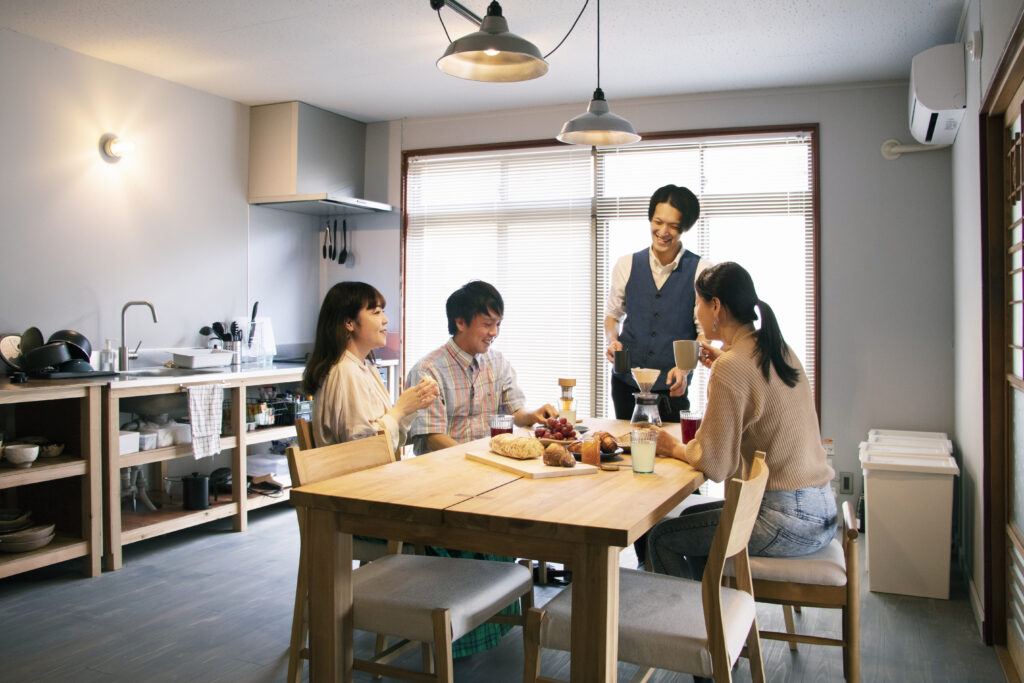
Roopt’s shared houses offer more than just affordable rent—they provide a flexible, low-commitment way to explore life in a new town. Unlike typical rental properties that require long-term contracts, or commercial shared houses with fixed rules and limited use of space, Roopt’s approach is more open and adaptable.
Residents can stay for just a few months or settle in for years. Some come for work assignments, others to test out rural living before making a bigger move. And for digital nomads, designers, or remote workers, Roopt offers a comfortable base for multi-local lifestyles. Stays can start from just one day, and continue for a few weeks, several months, or even years. There’s no deposit, no key money, and no agency fees. You simply move in when you’re ready, and stay as long as it suits you.
Roopt also encourages DIY and customization—many residents personalize their rooms or even help improve shared spaces. Thanks to the minimal renovation style, rooms are intentionally left open for further adaptation. Whether it’s adding shelves, repainting a wall, or rearranging furniture, small acts of making and adjusting are welcomed as part of everyday life.
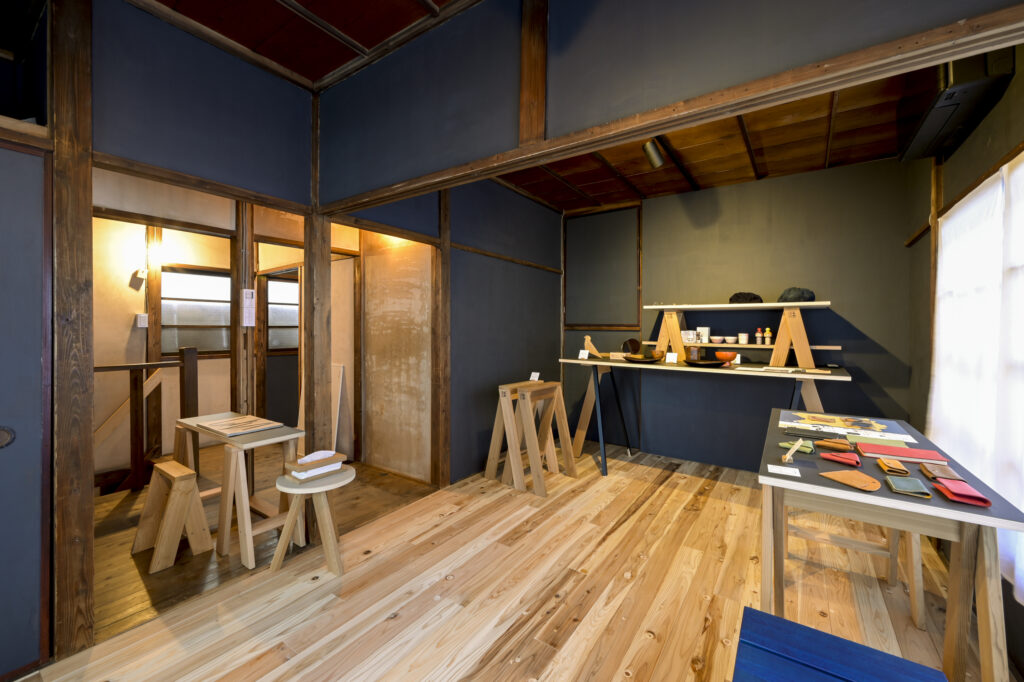
Set in towns like Ishinomaki, where housing demand is low but space is abundant, Roopt turns underused homes into entry points for people to gently try out a different and flexible way of living.
In Japan, housing is often tied to rigid expectations and social norms. Roopt’s shared houses offer an alternative for those who want to live more freely—a comfortable, flexible, and adaptable way of living that embraces change.
For more details, please visit the official Roopt website. The website provides a detailed explanation of the shared house service.
In addition, Roopt’s only property in central Tokyo—located in Kagurazaka—is also experimenting with an innovative model based on a DAO (Decentralized Autonomous Organization).
If you’re curious about this unique initiative, we’ll soon introduce it in a separate article—be sure to check it out!
Roopt Vacation Rentals: Revitalizing Akiya into Holiday Homes in Japan
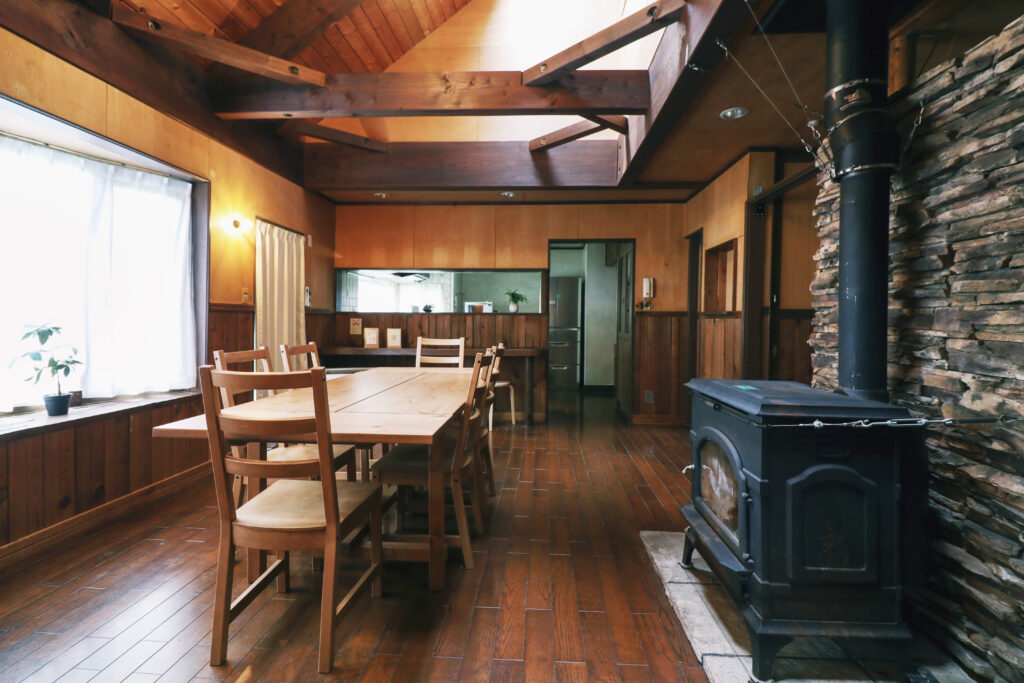
Building on the success of its shared houses, Makigumi has recently expanded Roopt to include vacation house rentals, renovated akiya offered as entire-house guest accommodations.
But why focus on whole-house rentals?
One key reason was to respond to the growing interest in multi-local lifestyles—a concept that began gaining attention in Japan during the 2010s. Some people started to live in cities during the week and spend weekends in regional towns, not as tourists, but as part-time community members.
Roopt’s vacation houses were created as a way to welcome these people into Ishinomaki.
Since then, this housing style has met a wide range of needs:
people who prefer minimal contact with others, families with small children, people returning to their hometowns but unable (or unwilling) to stay at their parents’ house, those who find hotel services too formal, or travelers who want to live like locals rather than just visit.
Of course, Roopt is not the only group to notice the potential of guesthouses in rural areas. What makes Makigumi’s approach unique is its commitment to akiya. Akiya, often a custom-built traditional Japanese house, reflects the local lifestyle, culture, and climate in subtle ways and has characters that mass-produced housing simply doesn’t offer. And, of course, renovating vacant homes helps address one of Japan’s most pressing social issues.
The photos below show the before-and-after of a renovation previously done by Makigumi.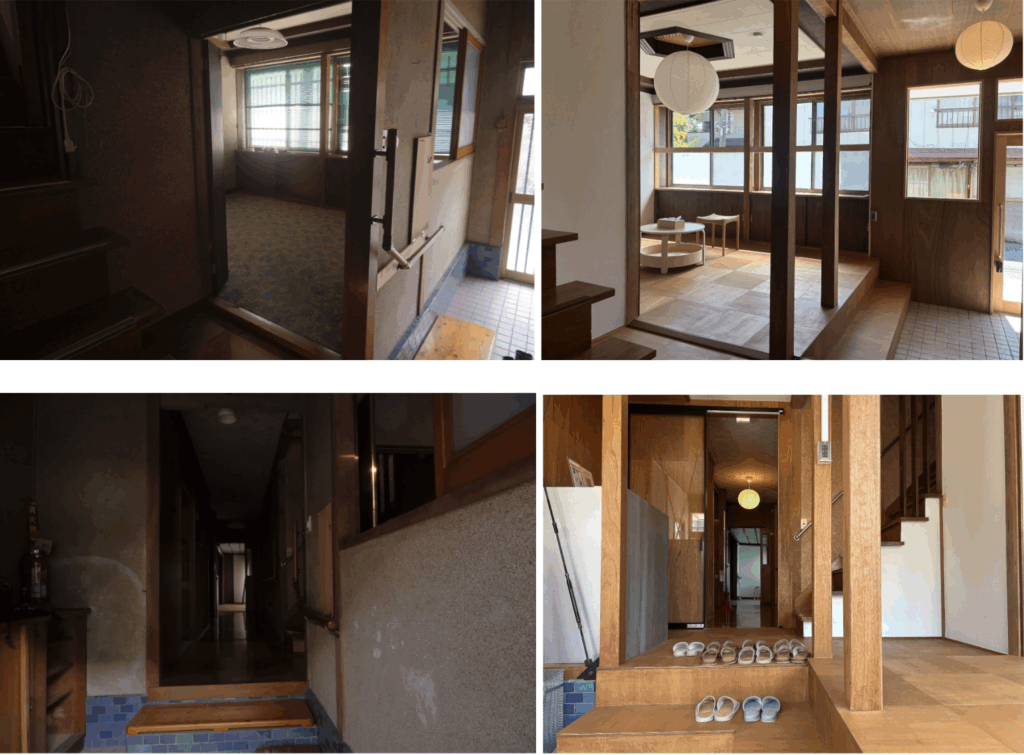
Roopt also rethinks the relationship between renters and property owners.
The goal is a new kind of rental model—one that brings happiness to everyone involved: the owner, the user, Makigumi as operator (or sometimes the owner), and the local community.
Currently, Roopt operates vacation house rentals in Miyagi, and has recently expanded the model to Matsumoto, a city where tradition, creativity, and livability meet. In addition, the first floor of a shared house in Kagurazaka, Tokyo, is also available as a guesthouse.
To close this article, let’s take a quick look at Roopt Matsumoto-Chuo, our newest property.
Roopt Matsumoto: Expanding Akiya Revitalization Beyond Miyagi
Makigumi began its journey in March 2015 in Ishinomaki, Miyagi Prefecture, and 2025 marks our 10th year of working with vacant homes in the region. Until now, all of the roughly 20 properties we operate—shared houses, guesthouses, and standard rentals—have been located in Ishinomaki or elsewhere in Miyagi, with just one exception in Tokyo Kagurazaka.
This year, however, we’re taking a big step: our first expansion beyond the prefecture, to a regional city—Matsumoto in Nagano Prefecture. As with many of our past projects, the Matsumoto property is an old single-family house over 50 years old. The current owner inherited it from their parents but lives far away and has no plans to move in. Still, they didn’t want to let go of a home filled with memories. They considered turning it into a vacation rental to help cover maintenance costs—but had no idea how to start. A local real estate company told them it would require a large upfront investment, and they were about to give up—until they came across Makigumi.
We proposed a model where we lease the house directly, take on the renovation, and manage the property ourselves. That’s how the project began.
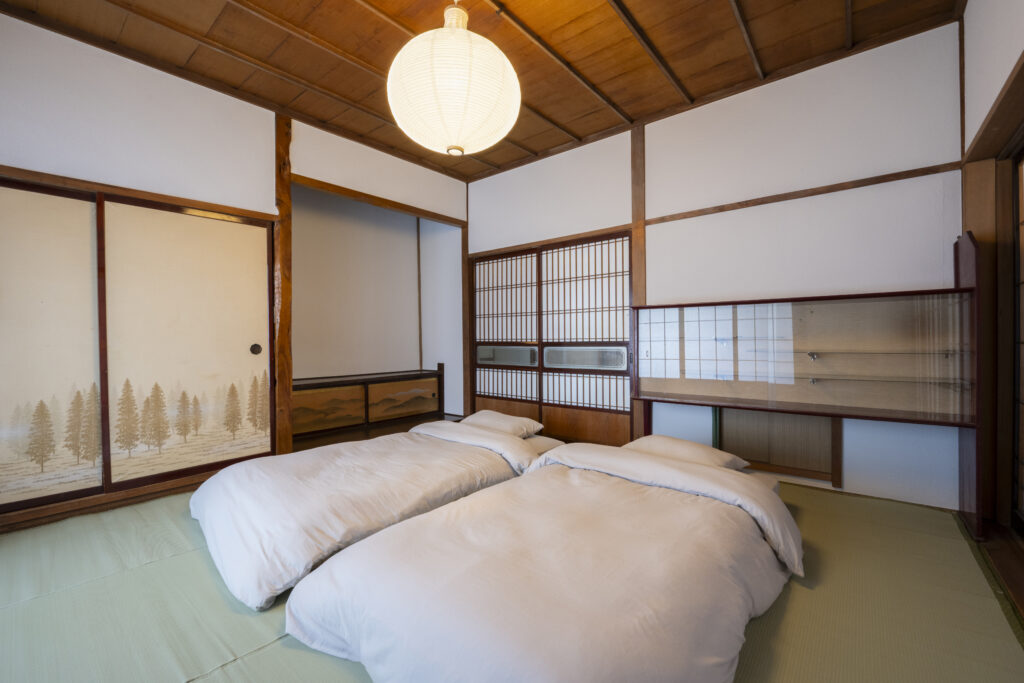
Why would a homeowner entrust the future of their cherished family home to a small, unfamiliar company like us? We believe the answer lies not only in our track record of vacant house revitalization, but also in our underlying philosophy: resisting Japan’s culture of scrap-and-build, and creating value from properties that the market considers “worthless.” We also pride ourselves on a renovation style that avoids overdesign, preserves what can be reused, and creates warm, stylish spaces at low cost.
Unlike in big cities where it’s relatively easy to find buyers or renters, regional cities like Matsumoto—with fewer than 300,000 residents—are home to many current and future vacant house owners facing the same dilemma. For Makigumi, these towns represent more than just untapped potential—they are places where we can make a real social impact by putting our philosophy into action. That’s why, in recent years, we’ve been actively seeking opportunities to expand Roopt beyond Miyagi and into other regional cities across Japan.
If you resonate with our vision, we’d love to collaborate—with anyone, from anywhere in the world—to reimagine akiya in Japan. Why not start with us?
